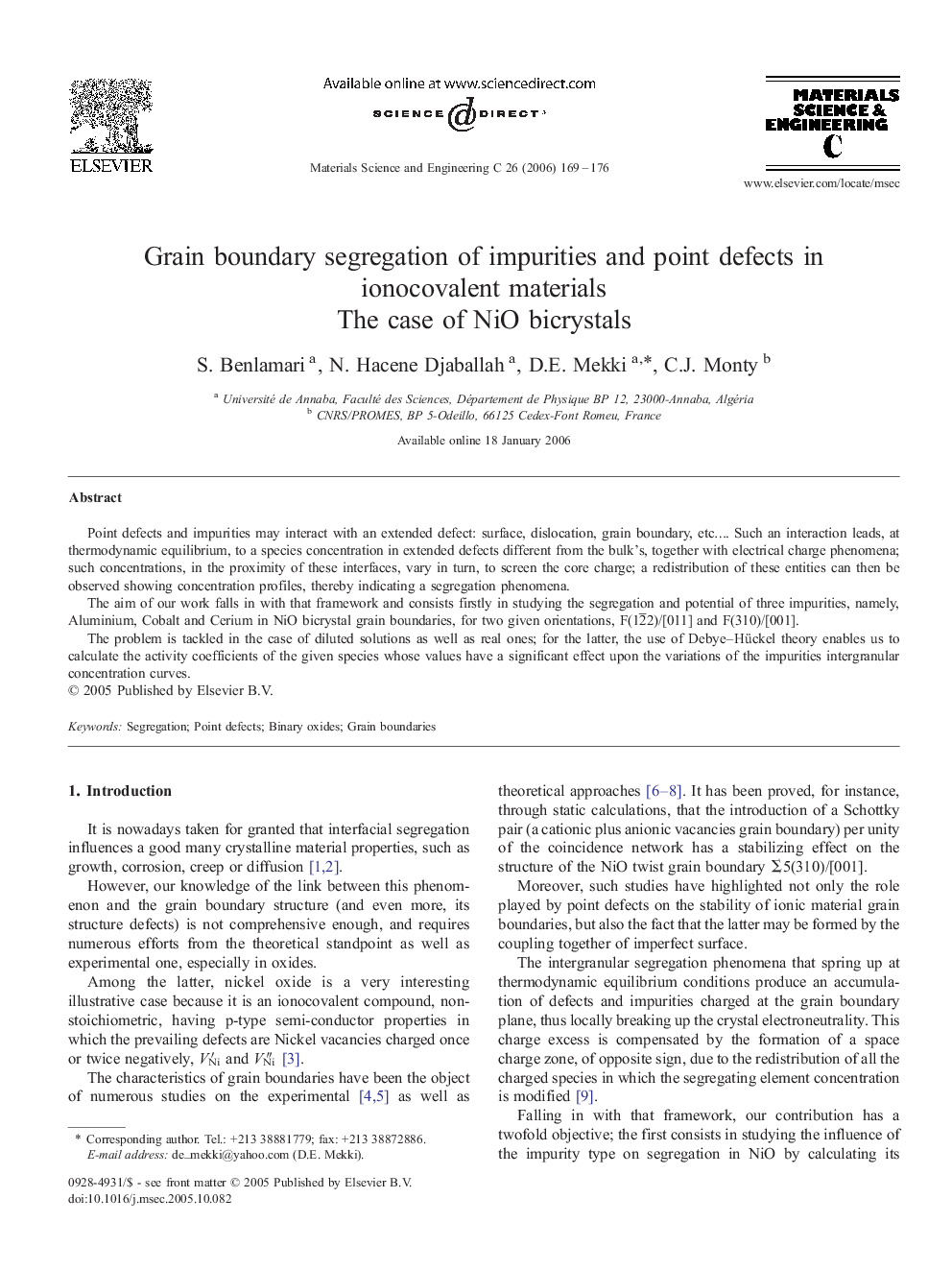| Article ID | Journal | Published Year | Pages | File Type |
|---|---|---|---|---|
| 1430728 | Materials Science and Engineering: C | 2006 | 8 Pages |
Point defects and impurities may interact with an extended defect: surface, dislocation, grain boundary, etc…. Such an interaction leads, at thermodynamic equilibrium, to a species concentration in extended defects different from the bulk's, together with electrical charge phenomena; such concentrations, in the proximity of these interfaces, vary in turn, to screen the core charge; a redistribution of these entities can then be observed showing concentration profiles, thereby indicating a segregation phenomena.The aim of our work falls in with that framework and consists firstly in studying the segregation and potential of three impurities, namely, Aluminium, Cobalt and Cerium in NiO bicrystal grain boundaries, for two given orientations, F(12¯2)/[011] and F(310)/[001].The problem is tackled in the case of diluted solutions as well as real ones; for the latter, the use of Debye–Hückel theory enables us to calculate the activity coefficients of the given species whose values have a significant effect upon the variations of the impurities intergranular concentration curves.
